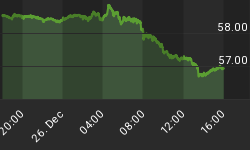Below is an extract from a commentary originally posted at www.speculative-investor.com on 12th May 2005:
Over the long-term gold stocks are counter-cyclical investments in that they trend higher during periods of stock market weakness and trend lower during periods of stock market strength; or, putting it another way, when the broad stock market is in a long-term upward trend the gold sector will be in a long-term downward trend, and vice versa. There will, however, be periods of a year or even longer when the gold sector and the broad stock market trend in the same direction. Also, during brief periods when the broad stock market falls at a very rapid rate the gold sector will almost always gets dragged down regardless of what is happening to the gold price at the time (the only exception we know of occurred in September of 2001 when the terrorism-related crash in the stock market was accompanied by moderate strength in the gold sector). The long-term trends, however, are invariably opposite.
The below chart is an attempt to illustrate the counter-cyclical nature of gold stocks. The chart, which compares the NASDAQ100 Index (NDX) with the HUI/NDX ratio, shows that when the NDX was trending strongly higher the gold sector was extremely weak on a relative basis and that shortly after the NDX embarked on a major bear market the gold sector began to demonstrate dramatic relative strength. What the chart doesn't show is that the gold sector was weak in absolute as well as in relative terms during the years leading up to the NDX's bull market peak, and was strong in absolute terms during the 2000-2002 bear market that wiped more than 80% off the NDX's market capitalisation.

It is noteworthy that the HUI didn't begin to show relative or absolute strength until several months after the NDX's March-2000 peak. In fact, it was only after the NDX conclusively signaled that a bear market was in progress by breaking below its May-2000 low that the HUI's bull market commenced. In other words, the START of the HUI's bull market coincided with technical confirmation of the END of the NDX's bull market.
Equivalent support to the NDX's May-2000 low currently resides at the August-2004 low and a break below this support by the NDX would be an impossible-to-ignore signal that the 2003-2005 cyclical recovery had ended. We therefore won't be surprised if the start of the next bull market in the gold sector roughly coincides with a break below the August-2004 low by the NDX, particularly since that type of blatantly-bearish development in the broad stock market would most likely prompt a reversal in the Fed's monetary policy.
















